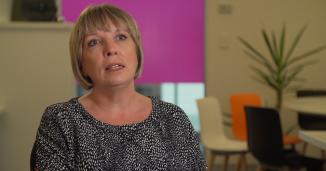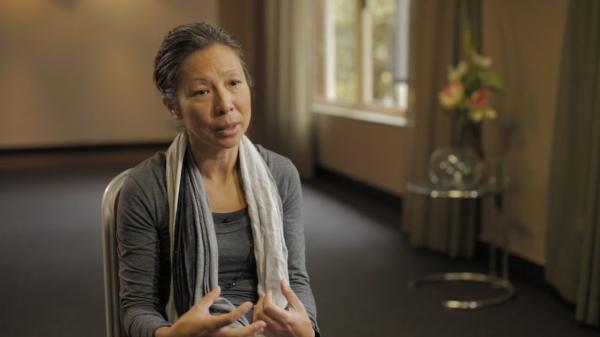First signs of RA
View transcript
First Signs
Suzie Edward May
Member, Arthritis Australia National Consumer Reference Group (rheumatoid arthritis)
Author of ‘Arthritis, pregnancy and the path to parenthood’
I was diagnosed with rheumatoid arthritis in my little toe joints, so holes in my joints were found and then within three months of diagnosis the rheumatoid arthritis spread to every joint in my body and it remains there 13 years later. So toes, ankles, knees, hips, shoulders, elbows, wrists, fingers, sternum, back, neck, and jaw.
Linda Bradbury
Nurse Practitioner, Rheumatology, University of Queensland
President, Rheumatology Health Professionals Australia
In rheumatoid arthritis, patients will get hot and swollen joints very typically in the hands and wrists and knees and feet and ankles; again you get the morning stiffness.
Dr. Samuel Whittle
Rheumatologist, The Queen Elizabeth Hospital, Adelaide
Rheumatoid arthritis can affect people of any age. It tends to start with pain and stiffness.
Assoc. Professor Peter Youssef
Rheumatologist, Royal Prince Alfred Institute of Rheumatology and Orthopaedics, Sydney
Chair – Arthritis Australia Scientific Advisory Committee
The first signs of rheumatoid arthritis are often pain and stiffness in the joints. The joints may be swollen. Patients may find that they can’t remove their rings or they’re having difficulty in taking off their watches or their watches feel tight. They may have stiffness in the feet.
Dr. Irwin Lim
Rheumatologist
The stiffness is worse first thing in the morning. It might be worse after prolonged periods of sitting down and then patients feel it when they stand up. There may be swelling or the sensation of tightness in the joints. People often complain about not being able to take off their rings or finding it a little bit difficult to grip.
Dr. Mona Marabani
Rheumatologist
President, Australian Rheumatology Association
Rheumatoid arthritis can come on with a number of different patterns. Most commonly it affects the small joints of the hands and feet. It can come on all of a sudden or in other cases, it can come on in just one or two joints at a time and slowly add on. So you start perhaps with a knee, or with a wrist, and slowly more and more joints become involved over time.
Dr. Marina Kang
General Practitioner
Usually someone over 30, so females are affected more than males in rheumatoid arthritis so a young-ish female may present with a swollen, painful, tender, stiff joint. Patients usually complain of aches, pain, swelling in their tissues, and rheumatoid arthritis is usually both sides affected so symmetrical and it can be the small joints of the hand, the wrist, the elbows, the shoulders, the hips and the knees and the knees as well. And they may also feel fatigued, they may have also lost some weight because of the inflammatory process. Sometimes sleep disorder is a problem for them too. So usually it’s a painful, hot, swollen, stiff joint that they complain of when they first come in.
Wendy Favorito
Consumer Director Arthritis Australia
Chair, Arthritis Australia National Consumer Reference Group (rheumatoid arthritis)
One of the symptoms of inflammatory arthritis are juvenile and now rheumatoid, is fatigue. And it’s an invisible, not well talked about symptom.
Dr. Irwin Lim
Rheumatologist
Many of my patients report it as the most debilitating aspect of their autoimmune disease and it’s actually the hardest one to treat. Sometimes we worry that fatigue may be as a result of the medication, sometimes it’s as a result of an uncontrolled inflammatory process. Our patients often have to come up with their own ways to deal with it; ways to pace their lifestyle and it is clearly an important symptom that we still need to learn how to cope with.














